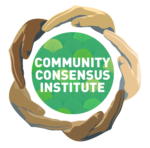Sustainability Planning is a goal-driven process that ensures social, economic, and ecological agendas and needs are met simultaneously. The basic procedure includes the following steps:
- Presentation of process to designated community leaders.
- Interviews with diverse leaders and members of the community.
- Collective visioning session / identification of unresolved community issues.
- Consensus sessions designed to increase community capability for holding sustainable beliefs and engaging in sustainable behaviors.
- Community wealth building.
- Financial planning for profit: public & private sectors.
- Enterprise facilitation.
- Land planning – creating the ideal human interface with the landscape.
- Biological planning – making the most of solar energy with a healthy ecosystem.
- Implementing the Shewhart Cycle: Plan – Do – Check – Act.
For in-depth information about Sustainability Planning, see the following:
“Fostering Social Sustainability: A View from the Trenches / Tools for Social Change” Outlines a strategy for cultivating human conditions conducive of sustainability, including the importance of addressing transformational change.
Chapter 8: “Conflict, Social Capital and Managing Natural Resources, A West African Case Study”
In Mali, within a four-year time frame, crop yields increased up to 78% using local technologies, violent conflict all but disappeared, and region-wide optimism occurred even during periods of drought. Learn how a basic conflict resolution process brought about these changes.“The Practice of Holistic Decision Making in Regional Planning Programs: The Confederated Tribes of the Colville Reservation. Case Study.”
A dramatic series of successes resulting from sustainability planning among the Confederated Tribes of the Colville Reservation. Over a four-year period of time, budgets were significantly reduced voluntarily, outputs increased such as doubling timber harvest in an ecologically and culturally sensitive manner, and consensus at the Tribal Council (meaning 100% agreement) became the norm.As a result, three federal laws were drafted reflecting the leadership occurring at the reservation. Since then, the Tribe has acquired over 100,000 acres of additional lands, made efforts to preserve all three language groups, and changed state law to allow elders to be considered certified teachers in the public school systems, and has used US environmental law to compel foreign companies to clean up their pollution on US territories.

